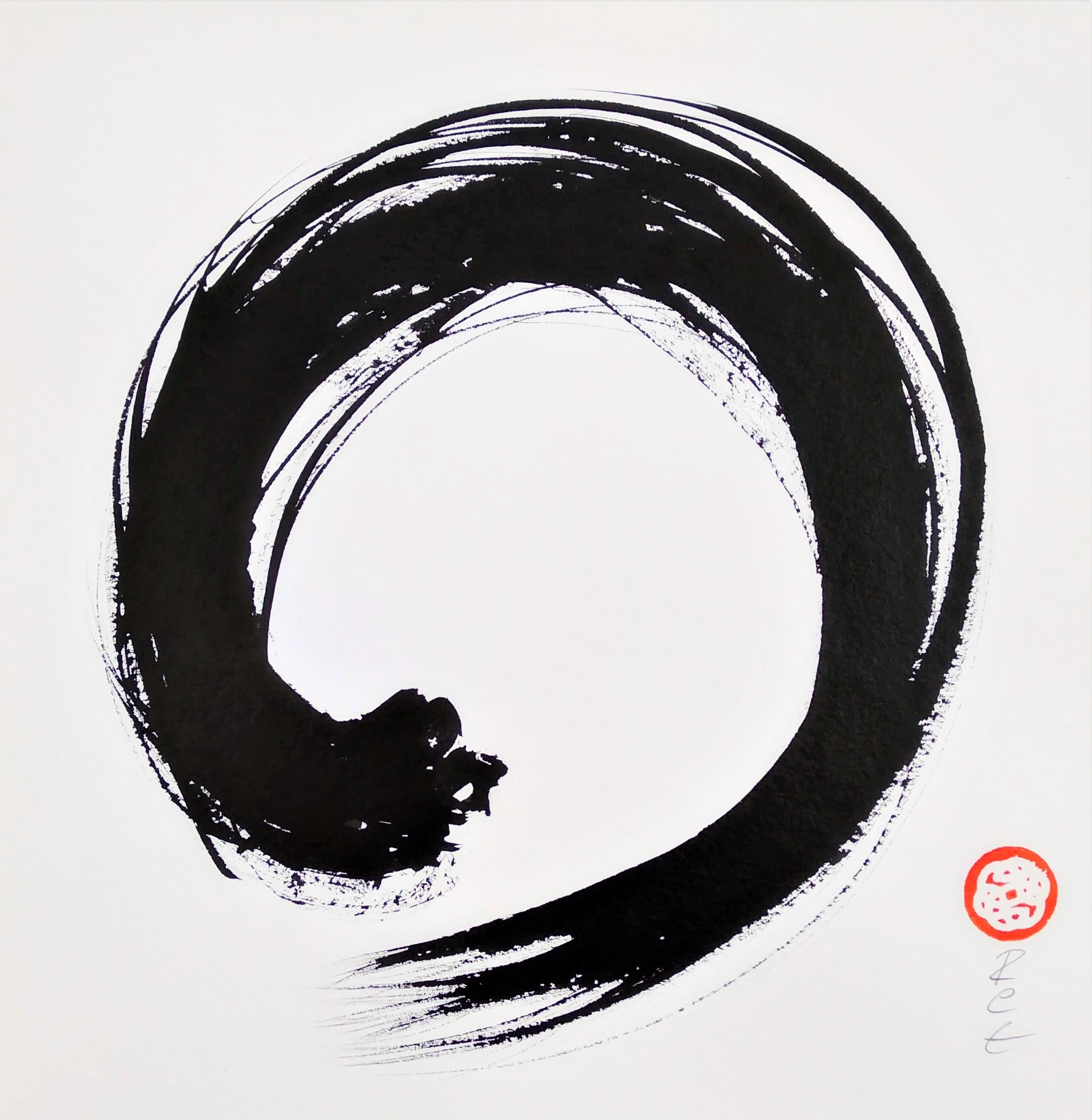

This spiritual practice of drawing ensō or writing Japanese calligraphy for self-realization is called hitsuzendō. Drawing ensō is a spiritual practice that one might perform as often as once per day. It evidences the character of its creator and the context of its creation in a brief, continuous period of time. The Enso symbol, also known as the Japanese circle, Infinity circle, or Zen circle, is a symbol of Japanese calligraphy as well as Buddhism. Circles are also often seen as protective symbols. In Chinese symbology, the circle represents the heavens. Circles are sometimes symbols of the Judeo-Christian God and sanctity, appearing as haloes.

Once the ensō is drawn, one does not change it. In the Zen Buddhist philosophy, a circle stands for enlightenment and perfection in unity with the primal principles. In Buddhism, the symbol represents harmony and simplicity. An Enso circle is a stamp of all the things that happened in the. Additionally, how one draws the circle represents their state of mind at that particular moment.

One day a small boy was playing near the river when he saw an old man with a long beard seated in the sand. It refers to a single brushstroke that produces a circle (usually unclosed). The Enso ring, also referred to as a Zen Circle, is a circular form that is drawn to express the completeness or the emptiness of the present moment. Creating the Perfect Circle (a Zen Proverb). When drawn according to the sōsho (cursive) style of Japanese calligraphy, the brushstroke is especially swift. The Enso symbol, also known as the Japanese circle, Infinity circle, or Zen circle, is a symbol of Japanese calligraphy as well as Buddhism. Usually, a person draws the ensō in one fluid, expressive stroke. When the circle is closed, it represents perfection, akin to Plato's perfect form, the reason why the circle was used for centuries in the construction of cosmological models (see Ptolemy). Zen practitioners relate the idea to wabi-sabi, the beauty of imperfection. In the former case, the circle is incomplete, allowing for movement and development as well as the perfection of all things. The tools and mechanics of drawing the ensō are the same as those used in traditional Japanese calligraphy: One uses an ink brush to apply ink to washi (a thin Japanese paper). But these examples are only the beginning. Another circle the iris of the human eye is said to be a window into one’s soul. It is characterised by a minimalism born of Japanese aesthetics.ĭrawing ensō is a disciplined-creative practice of Japanese ink painting, sumi-e. The Sun circles around the Sun and around its own axis, bringing about the cyclical changes in nature day and night, the change of the seasons, and tides. The ensō symbolizes absolute enlightenment, strength, elegance, the universe, and mu (the void).
ZEN CIRCLE FREE
In Zen, an ensō ( 円 相, "circular form") is a circle that is hand-drawn in one or two uninhibited brushstrokes to express a moment when the mind is free to let the body create. Some artists draw ensō with an opening in the circle, while others close the circle.


 0 kommentar(er)
0 kommentar(er)
